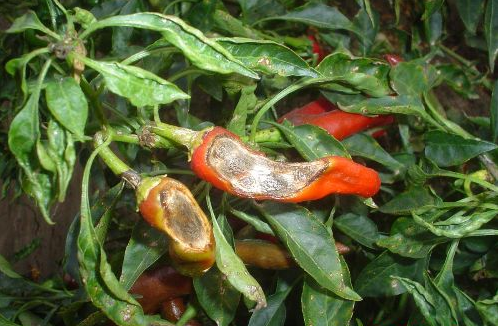
Exercise 8
DIE BACK AND ANTHRACNOSE
Dieback means dying of branches or stem from top to downward. Dieback is also referred as wither tip. Anthracnose means necrotic and sunken ulcer-like lesion on the stem, leaf, fruit, or flower of the host plant. Diebacks and anthracnoses are mainly caused by genus Colletotrichum. Dieback infected tissues and ulcer-like lesions (formed in anthracnose) are comprised of asexual fruiting bodies i.e. acervuli. The most common dieback and anthracnoses, found in Pakistan are: dieback of chillies (Colletotrichum capsici), anthracnose of Mango (C. gloeosporioides) and anthracnose of cotton (C. gossypii).
Materials
Samples of dieback and anthracnose infected tissues.
Procedure
- Study the symptoms of dieback and anthracnose on several hosts.
- Take the longitudinal or cross sections of infected portion, examine them under stereomicroscope and locate acervuli.
- Scratch infected tissues with inoculation needle, mount them on slide containing lactophenol and observe acervuli, conidiophores and conidia.
- Prepare cultures of these fungi and study the morphology of mycelia, conidiophores and conidia.
Questions
- What are acervuli?
Asexual fruiting bodies having the shape of saucer. In acervuli, asexual spores (conidia) are formed.
- How do dieback and anthracnose spread?
Through air, rain and injuries.
- What are conidiophores?
Conidiophores are stalk like structures on which conidia are formed. Conidia are asexual spore.


